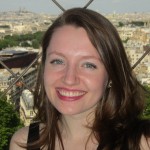A post from our student blogger Sarah Goodman
While completing an assignment for my capstone project I became interested to learn more about open source technology related to patentability.
Open source is a philosophy that promotes free redistribution and access to an end product’s design and implementation. One example of open source products is the Linux family of computer operating systems that are often available free of charge. Organizations such as Creative Commons and the Free Software Foundation have websites where individuals can file for alternative “licenses,” or levels of restriction, for their works. Open source resources most often refer to software and technology development. The concept of open source technology has existed for decades. There is a lot of available information concerning open source software. However, biological open source technologies have been recently emerging.
Biological open source technologies extend the principles of open source software development to the development of research tools in medical and agricultural biotechnology. One of the leading organizations aimed at open source biotechnology development is the Biological Innovation for Open Society, or BIOS. This new technology-sharing initiative was developed at Cambia, a nonprofit Australian research institute supported by the Rockefeller foundation.
In one example, open source methods have been used to distribute a technique for creating a genetically modified crop. This technique is available free to others to use and improve, as long as any improvements are also available free. BIOS states that while users of the technology are required to put any improvements they make into the open source pool of knowledge, companies and universities are allowed to patent any products they make using the technology, like a genetically modified crop. Patents are integral for innovation in biotechnology, so it is important that the products developed from using open source technological tools and methods can be patented. However, all licensees are required to share some aspects of the improvements, making them available for use to other licensees, even though they may be patented.
Open source licenses do not necessarily bar inventors from obtaining patent protection on inventive aspects of their technology. However, there may be some constraints on the inventors’ patent rights if some of the integral pieces of the invention were distributed through the open source method.
There are many difficulties in translating the current open source regulations to the biomedical field. The primary licensing system in software is copyright, whereas in biotechnology it is patents. The cost of patent protection can be substantial, but patent fees can be recovered from licensees. Due to the complexity of biotechnological innovations it can be difficult to determine what constitutes an improvement to a technology that uses open source materials or methods.
The current question is whether the open source model will work in the biological research field and how patent rights will be determined in court cases. A large determinant of the acceptance of the open source method in the commercial market will be whether or not it is appealing to IP owners. Open source biotechnology is an interesting emerging topic that will play a role in future biological patents.
